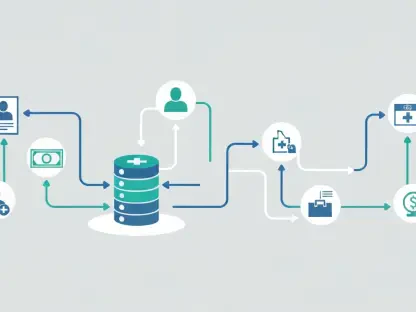In today’s digital age, enterprise collaboration tools (ECTs) have become indispensable for fostering communication and productivity, especially with the rise of remote work. However, the implementation of these tools brings significant compliance challenges due to the vast amounts of unstructured data they generate. Companies must navigate these challenges carefully to avoid legal and regulatory pitfalls while leveraging the benefits of ECTs to their fullest potential. This article delves into the critical concerns compliance teams must address to ensure legal and regulatory compliance when introducing new ECTs.
Access Control and User Management
Compliance teams need to have a clear understanding of who will be using the platform, especially if regulated employees or contractors are involved. Establishing clear access levels is crucial to avoid confusion and ensure appropriate use, addressing questions about open access versus invite-only channels and restricted access for contractors. Proper identification and management of users on the platform prevent unauthorized use and potential breaches of confidential information. Furthermore, creating specific user roles and permissions for different types of users helps maintain control and maximize security.
Training employees on the acceptable use of the platform is essential. This training should cover broader organizational policies and specific acceptable use procedures. By doing so, organizations can reduce liability related to inappropriate behavior, such as bullying or the use of profane messages. Staff training ensures that all users are well-informed about the platform’s limits and expectations, which in turn mitigates risks associated with non-compliance. Ongoing education and reinforcement of these policies are just as critical as the initial training sessions, ensuring that employees stay compliant with evolving company guidelines.
Policies should be in place for monitoring and protecting sensitive data on internal channels. This includes determining who can post on company channels to prevent disruptions. Effective access monitoring policies help in securing sensitive information and ensuring that only authorized personnel can handle critical data. Regular reviews and updates to access control measures are necessary to adapt to new threats and maintain robust security protocols. Additionally, systematic audits of user activities can help identify potential issues early on, allowing for swift remedial actions.
Data Retention Strategies
Different industries have specific data retention requirements. For instance, financial services must comply with recordkeeping requirements from bodies like FINRA and the SEC. Organizations must retain data for compliance, ensuring they can preserve, control, and produce records of unstructured data as needed. Understanding and adhering to these requirements is essential for avoiding regulatory penalties. Compliance teams should be well-versed in the particular statutes and regulations that apply to their industry to develop effective data retention policies aligned with legal mandates.
Data retention involves managing records per industry regulations, while data preservation is related to litigation and eDiscovery. Companies should be prepared for potential litigation by preserving relevant data. This distinction is crucial for compliance teams to understand, enabling them to implement appropriate strategies for both retention and preservation. Effective data management practices can significantly reduce the risks associated with legal disputes and ensure that companies meet regulatory expectations. Documenting and reviewing data retention policies regularly can further enhance an organization’s compliance posture.
Implementing enterprise archiving software that automates data retention can ease compliance burdens. These solutions ensure that data is stored appropriately and automatically deleted after the specified retention period. Automated archiving not only streamlines compliance efforts but also reduces the risk of human error in data management. By employing advanced technological solutions, companies can simplify the often complex task of data retention and ensure consistent adherence to regulations. Automated systems provide a reliable and efficient means of handling large volumes of data, freeing up resources for other critical compliance tasks.
Data Security and Regulatory Compliance
Any data archiving tool must adhere to security standards such as SOC 2 and ISO 27001:2013. These standards ensure operational security, authorized access, and data integrity. Compliance with these standards is non-negotiable for protecting sensitive information and maintaining data security. Organizations must prioritize adopting archiving solutions that meet established security criteria to safeguard against data breaches and unauthorized access. Consistent security audits and updates to the archiving systems are necessary steps to maintain a robust security posture.
Financial services must comply with SEC Rule 17a-4(f), which requires maintaining records in a non-erasable, non-rewritable format to ensure data authenticity. Failure to comply with these WORM (Write Once, Read Many) recordkeeping rules can result in significant fines. Ensuring that data is stored in a compliant format is critical for regulatory adherence. Firms within the financial sector must pay close attention to these requirements and select archiving solutions capable of meeting these stringent recordkeeping standards. Regular compliance checks and audits can help firms remain in line with regulatory expectations and avoid costly penalties.
Compliance standards may require retaining data in its native format for ease of access and auditability. Preserving the original context of each interaction is important for maintaining the integrity and authenticity of records. This practice facilitates easier audits and ensures that data remains accessible and verifiable. Organizations need to incorporate solutions that can manage data in its native format, thus maintaining a true and unaltered record of all communications. Investing in such technologies supports compliance efforts and simplifies the process of retrieving and auditing necessary records.
Monitoring and Accessibility of Data
In our current digital era, enterprise collaboration tools (ECTs) have become essential for enhancing communication and productivity, particularly as remote work becomes increasingly common. Despite their advantages, implementing these tools presents notable compliance challenges due to the large volumes of unstructured data they produce. ECTs generate a myriad of communications, documents, and data exchanges that must be carefully managed to meet various legal and regulatory standards.
Businesses must tread carefully to mitigate legal risks and adhere to compliance requirements while fully leveraging the benefits of ECTs. Additionally, this article explores the vital considerations compliance teams must address to uphold legal and regulatory compliance when introducing new enterprise collaboration tools.
Key areas of focus include data security, privacy concerns, and the retention of corporate records. Ensuring that these tools comply with industry-specific regulations, such as GDPR or HIPAA, is crucial. Moreover, companies must implement robust data governance frameworks and undertake regular audits to identify and address any compliance gaps. By addressing these compliance concerns methodically, organizations can maximize the effectiveness of ECTs, fostering a collaborative environment while staying within the bounds of the law.








